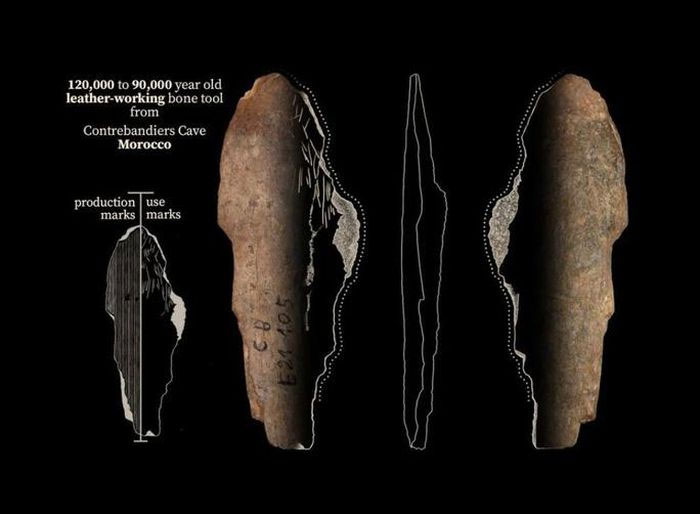The earliest evidence of clothing production has just been discovered in a cave in Morocco, dating back up to 120,000 years.
According to research led by anthropologist Emily Hallett from the Max Planck Institute for the Science of Human History (Germany), this is a significant milestone in human history.

Some bone fragments used as tools for creating ancient clothing – (Photo: Max Planck Institute).
And the dating of the “fashion workshop” to 120,000 years is truly surprising. In the study, scientists collected a total of 12,000 bone fragments at the Contrebandiers Cave along the Atlantic coast. Among them, over 60 bone pieces were used as tools for processing animal hides.
Speaking to Science Alert, Dr. Hallett noted that organic materials such as leather and fur are difficult to preserve in ancient sediments, but the discovery of these fur processing tools indirectly indicates ancient activities. Some other bone fragments at the site also show characteristic marks of skinning.
This new discovery also highlights a significant evolutionary step for humanity in conquering new habitats. As they left Africa, they faced different climatic conditions, which may have spurred the creation of clothing and a variety of new tools.
The three most commonly used animal skins found in this cave are Rüppell’s fox, golden jackal, and wildcat, all of which are ancient species but share many characteristics with modern relatives. Furthermore, these “tailors” also hunted cattle and other large herbivores, primarily for food.
Some previous studies suggest that clothing may have first appeared around 170,000 years ago in Africa, but the discovery of evidence indicating clothing production in such a “workshop” is still quite shocking.
The research was recently published in the journal iScience.

















































